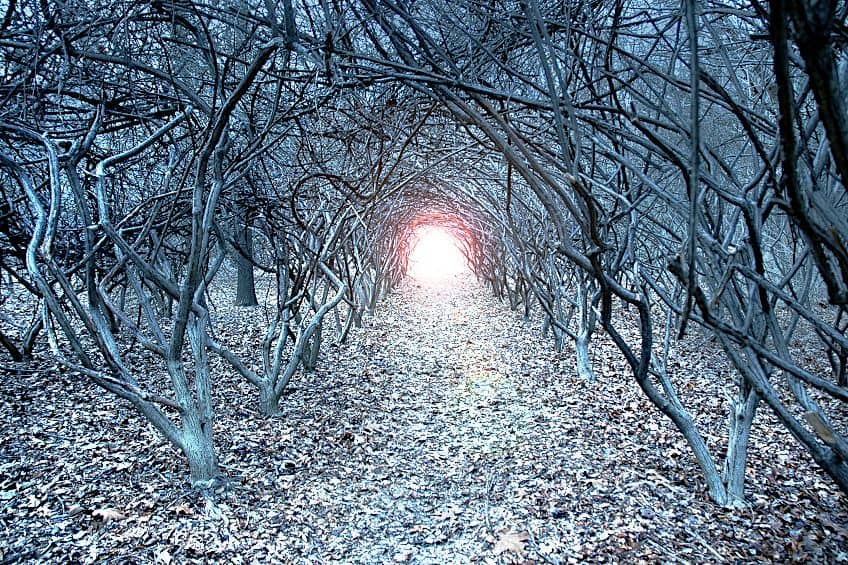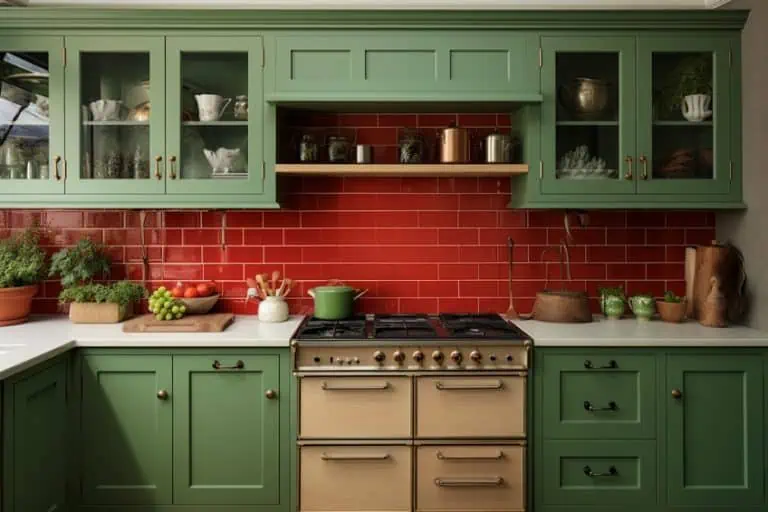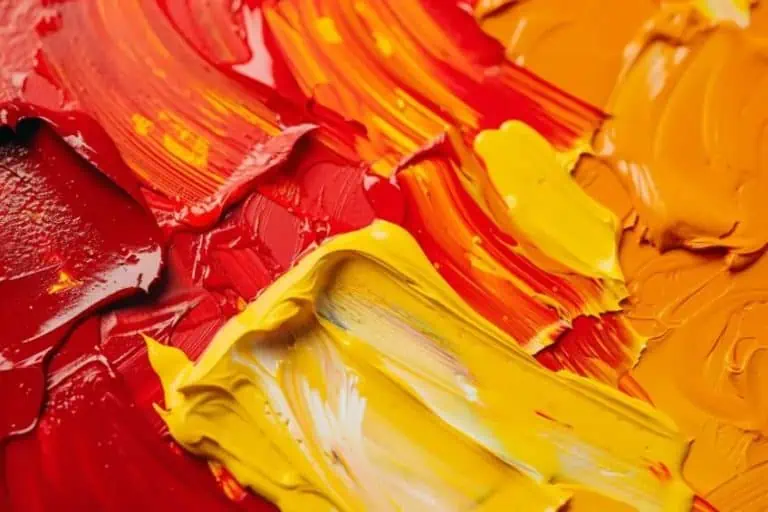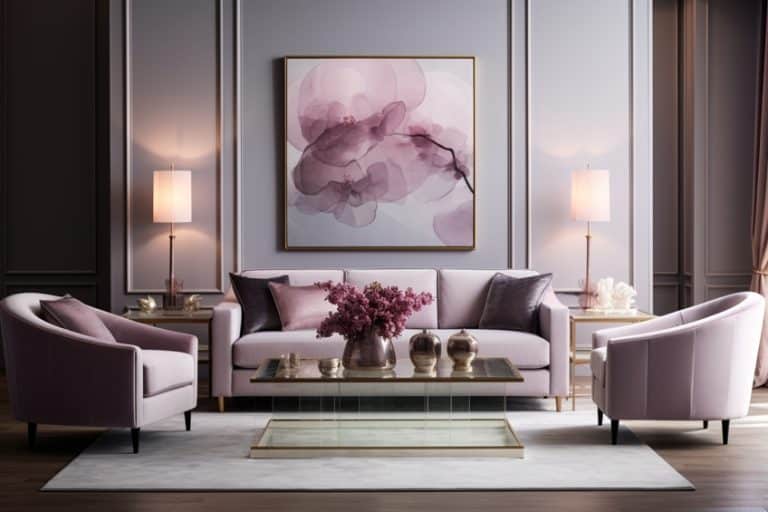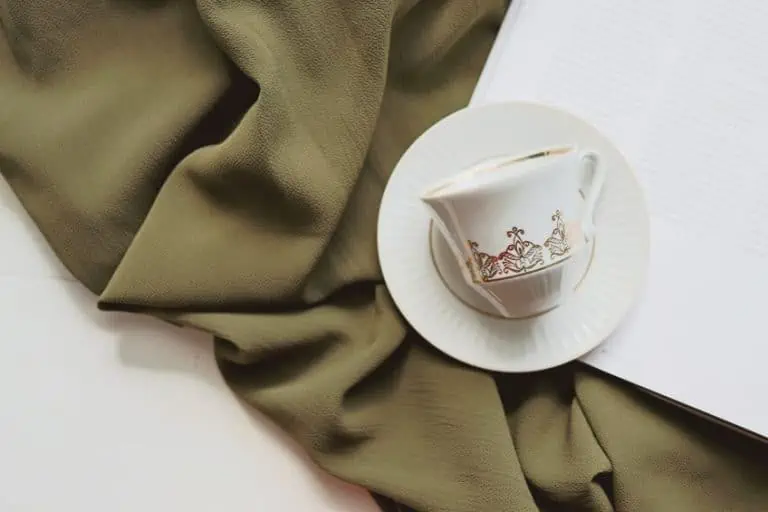Shades of Gray Color – Exploring the Different Shades of Gray
This post may contain affiliate links. We may earn a small commission from purchases made through them, at no additional cost to you.
In a world often viewed in black and white, the allure of the many different shades of the gray color captivates the human psyche. These ethereal hues exist in the realms of morality, perception, and complexity, revealing a tapestry of intricacies that challenge our binary thinking. Like a delicate dance between light and shadow, shades of the gray color beckon us to explore the blurred boundaries between right and wrong, truth and deception, and love and betrayal. Within this nuanced spectrum, and through our discoveries below, you will find the varying types of grays, gray color names, as well as the history of these allusive shades throughout our human journey.
Table of Contents
The Different Types of Gray and Their History
The realm of the gray color palette unfolds like a captivating tapestry, revealing a rich and storied history woven into the fabric that makes up human civilization. From the earliest traces of artistic expression to the modern complexities of color theory, the different shades of gray have left an indelible mark on our collective imagination. In antiquity, gray emerged as a testament to the artist’s skill, painstakingly crafted through the careful combination of charcoal and natural pigments. The monochromatic majesty of grayscale art adorned the walls of ancient caves, etching the stories of our ancestors with an evocative simplicity that transcended language.
Throughout the ages, gray evolved in significance and symbolism. In the medieval period, it was associated with humility, mirroring the somber vestments of monastic orders.
Gray became a canvas upon which the vibrant colors of stained-glass windows and illuminated manuscripts flourished, serving as a backdrop that accentuated their radiant splendor. During the Renaissance, gray found a renewed appreciation, as artists deftly employed its subtle tonalities to evoke depth and realism. Masters like Leonardo da Vinci and Rembrandt harnessed the power of gray to shape the contours of their subjects, rendering them with an astonishing lifelike quality.
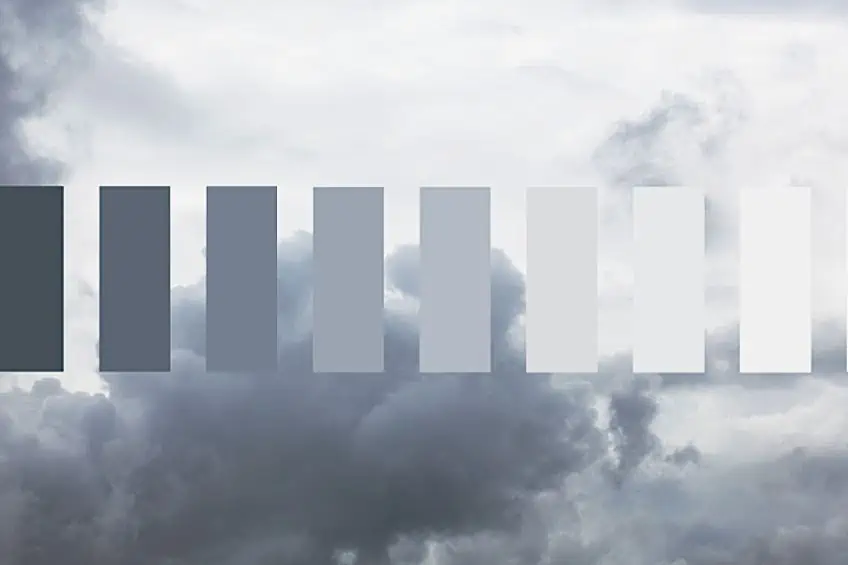
| Gray Color Names | Gray Hex Codes | Gray RGB | CMYK Color Code (%) | Shades of Gray |
| Gray | #808080 | 128, 128, 128 | 0, 0, 0, 50 | |
| Silver | #c0c0c0 | 192, 192, 192 | 0, 0, 0, 25 | |
| Ash | #b2beb5 | 178, 190, 181 | 6, 0, 5, 25 | |
| Stone | #928e85 | 146, 142, 133 | 0, 3, 9, 43 | |
| Slate | #708090 | 112, 128, 144 | 22, 11, 0, 44 | |
| Cloud | #b6b6b4 | 182, 182, 180 | 0, 0, 1, 29 | |
| Shadow | #373737 | 55, 55, 55 | 0, 0, 0, 78 | |
| Iron | #322d31 | 50, 45, 49 | 0, 10, 2, 80 | |
| Charcoal | #232023 | 35, 32, 35 | 0, 9, 0, 86 | |
| Flint | #7f7d9c | 127, 125, 156 | 19, 20, 0, 39 | |
| Pebble | #333333 | 51, 51, 51 | 0, 0, 0, 80 |
The industrial revolution brought about a shift in the perception of gray. The rise of factories and urban landscapes cast a pall of gray smoke and soot over cities, transforming gray into a symbol of mechanization and the dehumanizing effects of modernization. However, it also became associated with progress, and innovation, as sleek gray metals and machinery defined the era of technological advancement. In the realm of color theory, gray acquired newfound significance. It emerged as a neutral hue, capable of influencing the perception of surrounding colors. Designers and architects recognized its capacity to create balance, harmony, and a sense of calm within spaces.
Today, the palette of gray continues to evolve, offering an expansive range of shades that reflect the complexity and diversity of our world. From the cool and crisp tones of silver and ash to the warm and inviting hues of stone and slate, each shade of gray carries its own unique character and conveys a distinct emotional resonance.
The different shades of gray tell a tale of versatility and adaptability, symbolizing the subtle intricacies of the human experience. They invite us to explore the interplay between light and shadow, the dance of contrasts, and the beauty found within the realms of understatement and nuance. The history of gray is a testament to its enduring allure, capturing our imagination and serving as a timeless canvas for the expression of artistic vision and the complexities of our ever-evolving world.
The Symbolic Meaning of the Color Gray
Subtle and enigmatic, gray is a color that carries profound symbolic meaning, evoking a wide range of emotions and perceptions. Gray is often associated with neutrality and impartiality. It serves as a bridge between black and white, merging the two extremes into a harmonious whole. In this sense, gray represents objectivity and the ability to see multiple perspectives. It invites us to embrace nuance and complexity, urging us to look beyond polarities and seek a deeper understanding of the world. As a color that lacks the vibrancy of other hues, gray is often linked to calmness and tranquility. It offers a respite from the noise and intensity of our daily lives, allowing our minds to find solace in its muted tones. Gray walls in a room can create a serene and peaceful atmosphere, fostering a sense of balance and clarity.
Gray is also associated with introspection and contemplation. Like a mist veiling the landscape, it encourages us to look inward and explore the depths of our thoughts and emotions. Gray can evoke a sense of introspective solitude, providing a canvas for self-reflection and introspection.
It invites us to dive into the uncharted territories of our minds, where profound insights and personal growth await. In the realm of emotions, gray is often linked to melancholy and somberness. It carries a sense of solemnity and reflection, like the hushed whisper of rain on a quiet day. Gray captures the bittersweet nature of life’s transitions and uncertainties, reminding us of the impermanence of things. It is a color that acknowledges the complexities of human experiences, embracing both sorrow and resilience. Moreover, gray is a color that speaks of elegance and sophistication. It exudes a sense of understated beauty and timeless allure. Gray suits and dresses are often chosen for their refined and polished aesthetic, emanating a sense of effortless style and grace. In the world of design, gray is used to create sleek and modern aesthetics, lending a sense of sophistication to spaces and objects.

Symbolically, gray can represent ambiguity, existing in the spaces between certainty and doubt, leaving room for interpretation and exploration. Gray challenges our tendency to seek absolutes, reminding us that life’s truths are often found in the spaces of uncertainty and ambiguity. In nature, gray can be found in the tranquil mists of the mountains, the shimmering surfaces of lakes, and the stoic beauty of stone. It symbolizes the strength and resilience of the natural world, where even in the absence of the vibrant colors, there is a quiet beauty that endures. Overall, the symbolic meaning of the color gray is multifaceted and complex.
It embodies neutrality, calmness, introspection, melancholy, elegance, and ambiguity. Gray invites us to embrace the subtleties and complexities of life, reminding us that there is beauty and wisdom in the spaces between certainty and uncertainty.
The Psychological Effects of Gray Shades
The psychological effects of the gray color palette unfolds like a captivating journey through the realms of perception and emotion. Gray, with its myriad tonalities and subtleties, possesses a unique power to evoke a wide range of psychological responses. Shades of light gray, such as silver and pearl, exude a sense of serenity and sophistication. They create an atmosphere of calm introspection, inviting contemplation and fostering a peaceful state of mind. These gentle hues are often associated with purity and elegance, instilling a sense of refinement and grace. On the other hand, a dark gray color palette, consisting of charcoal and slate, can evoke a more mysterious and introspective mood. They carry an air of depth and intensity, often inspiring a sense of gravity and seriousness.
These darker hues may trigger a contemplation of the profound complexities of life, as they hint at the shadows that dwell within our thoughts and emotions.
Gray, as a neutral color, can also serve as a versatile backdrop, allowing other colors and elements to take center stage. In this role, it creates a sense of balance and harmony, offering a soothing and unobtrusive foundation for other psychological effects to emerge. It provides a neutral space for the mind to rest, fostering a sense of tranquility and openness. Furthermore, gray has the remarkable ability to adapt and reflect the surrounding environment and context. In bright and airy spaces, light grays can enhance feelings of spaciousness and cleanliness, promoting a sense of clarity and order. In contrast, in dimly lit or melancholic settings, deeper shades of gray may amplify a sense of introspection and contemplative solitude.

Psychologically, gray can elicit a sense of neutrality and impartiality. It is often associated with objectivity and rationality, offering a calm and composed perspective in the face of complexity. Gray encourages a measured and analytical approach, allowing for detachment and a broader understanding of the intricate nuances of life. However, it is important to note that individual experiences and cultural contexts can influence the psychological effects of gray. Personal associations and preferences, as well as cultural symbolism, can shape our emotional responses to specific shades of gray. In the kaleidoscope of psychological effects, the different shades of gray color serve as a subtle palette for the mind to explore and interpret.
From tranquility to introspection, neutrality to depth, the gray color palette offers a canvas for the kaleidoscope of human emotions and the complex interplay between light and shadow within our inner world.
Using Shades of Gray in Interior Design
In interior design, where creativity and aesthetics merge, there exists a versatile and captivating color palette that holds the power to transform spaces into realms of elegance and sophistication: shades of gray. From soft and ethereal to bold and dramatic, gray hues offer a myriad of possibilities for creating captivating and harmonious interior designs. One of the most striking qualities of using shades of gray in interior design is their abilities to evoke a sense of timeless elegance. Whether in the form of light dove gray or deep charcoal, gray tones exude a refined and sophisticated aesthetic. Gray can serve as a neutral backdrop, allowing other colors and elements to take center stage, or it can be used as a statement hue to create a sense of drama and impact.
The versatility of gray makes it a perfect choice for any style of interior design. In modern and minimalist spaces, light shades of gray can create an atmosphere of simplicity and serenity.
The clean lines and understated nature of gray contribute to a sense of calmness and order. On the other hand, in more traditional or opulent settings, darker shades of gray can add depth and richness, enhancing the luxurious ambiance of the space. Shades of gray also offer a unique opportunity to play with texture and contrast within a room. Light gray walls paired with dark gray furniture or vice versa create a visually stunning contrast that adds dimension and visual interest. The subtle variations in shades of gray allow for a layering effect that can make a room feel multidimensional and rich. Gray is also known for its ability to create a sense of balance and harmony within a space. It acts as a unifying element, effortlessly bringing together different colors and patterns.

Gray can be used as a bridge between warm and cool tones, making it an ideal choice for creating cohesive and well-balanced color schemes. It can soften the impact of vibrant or bold colors, allowing them to shine without overwhelming the space. Moreover, shades of gray lend themselves well to creating a calming and serene atmosphere. Lighter shades of gray evoke a sense of tranquility and openness, making them perfect for spaces such as bedrooms or living rooms where relaxation is key. Gray can also be used to create a spa-like atmosphere in bathrooms, providing a smooth and serene environment for self-care and rejuvenation. When it comes to materials and finishes, gray can enhance the beauty and texture of various elements.
From sleek metallic finishes to natural stone or wood, gray complements a wide range of materials and brings out their inherent qualities. It can highlight the grain of wood, accentuate the veining of marble, or add a touch of modernity to metallic surfaces.
In summary, using shades of gray in interior design offers a multitude of possibilities to create captivating and harmonious spaces. Its timeless elegance, versatility, and ability to create balance make it a popular choice among designers. Whether as a neutral backdrop or a statement hue, gray adds depth, sophistication, and a sense of tranquility to any room. So let your imagination run wild with the myriad shades of gray and discover the transformative power it holds in shaping your ideal living environment.
Using Shades of Gray in Art
When we turn our gaze toward the medium of art and design, the interplay of different shades of gray with vibrant colors reveals a captivating dance of contrast and harmony. Like a skilled conductor, artists and designers wield gray as a subtle partner, enhancing the brilliance of other hues and imbuing compositions with depth and visual intrigue.
The marriage of gray with bold, saturated colors creates a striking juxtaposition that amplifies their impact.
When paired with fiery reds or vibrant blues, the coolness of gray acts as a stabilizing force, tempering the intensity and allowing the colors to shine with heightened vibrancy. It creates a dynamic tension that draws the eye and evokes a sense of energy and drama.

| Color Name | Hex Codes | RGB | CMYK Color Code (%) | Shades of Color |
| Sonic Silver | #757575 | 117, 117, 117 | 0, 0, 0, 54 | |
| Blue Cola | #0088de | 0, 136, 222 | 100, 39, 0, 13 | |
| Persian Red | #cc3333 | 204, 51, 51 | 0, 75, 75, 20 |
Conversely, when gray intertwines with pastels or soft hues, a delicate equilibrium emerges. The gentle whispers of pink, lavender, and mint green find solace within the muted tones of gray, resulting in a composition that exudes a serene and dreamlike quality, resulting in a composition that exudes a serene and dreamlike quality. Gray provides a backdrop that allows these delicate colors to breathe and unfold, creating an atmosphere of tranquility and subtlety.

| Color Name | Hex Codes | RGB | CMYK Color Code (%) | Shades of Color |
| Sea Mist | #c8ded0 | 200, 222, 208 | 10, 0, 6, 13 | |
| Lavender Gray | #b6bcd6 | 182, 188, 214 | 15, 12, 0, 16 | |
| Mint Green | #abffb8 | 171, 255, 184 | 33, 0, 28, 0 |
The strategic use of different shades of gray can also guide the viewer’s attention and establish visual hierarchy within the composition. By employing darker grays as shadows or as a framing element, artists and designers can create a sense of depth and perspective. This allows the focal points or dominant colors to take center stage, commanding attention and creating a captivating visual narrative.

| Gray Color Names | Gray Hex Codes | Gray RGB | CMYK Color Code (%) | Shades of Gray |
| Zambezi Gray | #5a5a5a | 90, 90, 90 | 0, 0, 0, 65 | |
| Gray | #808080 | 128, 128, 128 | 0, 0, 0, 50 | |
| Quicksilver | #a6a6a6 | 166, 166, 166 | 0, 0, 35 |
Furthermore, gray acts as a unifying force, tying together disparate colors within a composition. Its neutral nature allows it to seamlessly blend with various hues, providing a visual bridge that brings cohesion and balance to the overall design. Whether it’s in the form of a gradient, a subtle wash, or carefully placed accents, gray fosters a sense of harmony and coherence, enhancing the overall visual impact. In the world of branding and logo design, the inclusion of different shades of gray alongside vibrant colors can convey a sense of sophistication, professionalism, and timelessness.
Gray acts as a neutral anchor that elevates the vibrancy of the brand colors, while also imparting a sense of refinement and elegance. The combination of gray and color fosters a visual identity that is both memorable and versatile.
The interplay between different shades of gray and other colors in art and design becomes a delicate dance of contrast, balance, and visual storytelling. It is a testament to the artist’s or designer’s skill, as they deftly navigate the complexities of hue, tone, and composition. Through this harmonious intermingling, art and design are brought to life, captivating the senses and evoking a myriad of emotions.
In the vast spectrum of existence, different shades of gray emerge as captivating enigmas, transcending the boundaries of black and white. They weave a delicate tapestry of subtlety and depth, inviting us to explore the nuances of perception, emotion, and creativity. Within the realm of art, design, and the human experience, gray serves as a versatile palette, a chameleon of shades that adapts and enhances the brilliances of other colors, or stands alone in its timeless elegance. It evokes tranquility, mystery, and introspection, guiding our gaze through the interplay of light and shadow. The captivating allure of the different shades of gray lies in their ability to provoke contemplation, evoke emotion, and provoke a deeper understanding of the multifaceted nature of our world. Through their delicate whispers and enigmatic depths, they remind us that life is not confined to absolutes, but flourishes within the exquisite nuances of the shades of gray.
Frequently Asked Questions
What Is the Color Gray?
Gray is a neutral color that is achromatic, meaning that it lacks any dominant hue. It is created by mixing black and white, resulting in a range of shades that fall between the extremes of pure black and pure white.
How Does Gray Affect Mood and Atmosphere?
Gray has a calming and soothing effect, often creating a sense of serenity and stability. Lighter grays can make a space feel open and airy, while dark gray colors can lend a sense of intimacy and coziness. The psychological impact of gray is also influenced by its interaction with other colors and the context in which it is used.
What Are Some Popular Shades of Gray?
Popular shades of gray include silver, charcoal, slate, dove gray, and ash gray. Each shade has its own unique character that can evoke different moods or atmosphere. The choice of shade often depends on personal preference, the intended use, and the desired aesthetic outcome.
How Is Gray Used in Art and Design?
In art and design, gray is a versatile color that can be used in various ways. It can serve as a backdrop to highlight and enhance other colors, create visual contrast, or convey a particular mood or atmosphere. Gray is often employed to add depth, shading, and realism to drawings, paintings, and digital art. It is also widely utilized in interior design for its timeless appeal and its ability to create a balanced and harmonious aesthetic.
Duncan graduated with a diploma in Film and TV production from CityVarsity in 2018, after which he continued pursuing film while taking on a keen interest in writing along the way. Since having graduated, he began working as a freelance videographer, filming a variety of music videos, fashion and short films, adverts, weddings and more. Throughout this, he’s won a number of awards from various film festivals that are both locally and internationally recognized. However, Duncan still enjoys writing articles in between his filming ventures, appreciating the peace and clarity that comes with it.
His articles focus primarily around helping up-and-coming artists explore the basics of certain colors, how these colors can be paired with other shades, as well as what colors are created when you mix one with another. All while relating these shades to historically significant paintings that have incorporated them into their color palette. As a lover of the arts himself, he takes great interest in the Renaissance era of paintings, an era that has directly inspired many of his favorite films.
Learn more about Duncan van der Merwe and about us.
